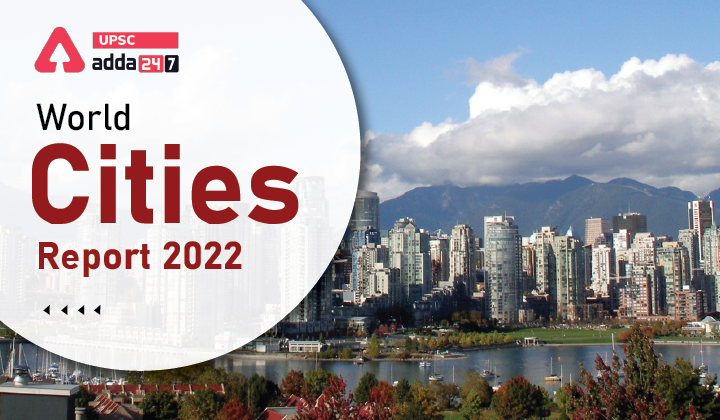Table of Contents
World Cities Report : Relevance
- GS 2: Bilateral, regional and global groupings and agreements involving India and/or affecting India’s interests.
UN Habitat: Context
- Recently, UN-Habitat has released a report titled, ‘World Cities Report 2022’ according to which urban areas are responsible for 70 per cent of greenhouse gas emissions.
World Cities Report 2022: Key points
- The report seeks to provide greater clarity and insights into the future of cities based on existing trends, challenges and opportunities, and suggest ways that cities can be better prepared to address a wide range of shocks and transition to sustainable urban futures.
- The report says that cities must act as leaders of climate action to meet the 1.5 degree Celsius goal set by the Paris Agreement.
World Cities Report 2022: Key findings
- Cities are here to stay, and the future of humanity is undoubtedly urban: We are witnessing a world that will continue to urbanize over the next three decades—from 56 per cent in 2021 to 68 per cent in 2050.
- The future of cities is not uniform across regions and can lead to a range of scenarios: In developed countries, the key priorities for the future of cities also include managing cultural diversity, upgrading and modernizing ageing infrastructure, addressing shrinking and declining cities, and
meeting the needs of an increasingly ageing population.- In developing countries, however, urban priorities for the future are rising levels of poverty, providing adequate infrastructure, affordable and adequate housing and addressing challenge of slums, high levels of youth unemployment, and investing in secondary cities.
- Despite greater incidence of the virus in urban areas and the economic difficulties created by the pandemic, cities are once again serving as beacons of opportunity to people in search of employment, education and training or taking refuge from conflict.
World Cities Report India
- The report said that India’s urban population is estimated to stand at 675 million in 2035, the second highest behind China’s one billion.
- By 2035, the percentage of population in India at mid-year residing in urban area will be 43.2%.
- In Asia, in the last two decades, China and India experienced rapid economic growth and urbanisation, which led to a massive reduction in the number of people living in poverty.
- The report further said that with existing urban populations continuing to grow naturally through rising birth rates, the urban population is forecast to grow from 56% of the global total in 2021 to 68% by 2050.
- Cities in the warm climates or low-lying coastal areas face existential threats due to the risks and impacts of climate change and extreme weather events “such as increased heatwaves in Delhi, India.
Read current affairs for UPSC





 TSPSC Group 1 Question Paper 2024, Downl...
TSPSC Group 1 Question Paper 2024, Downl...
 TSPSC Group 1 Answer key 2024 Out, Downl...
TSPSC Group 1 Answer key 2024 Out, Downl...
 UPSC Prelims 2024 Question Paper, Downlo...
UPSC Prelims 2024 Question Paper, Downlo...





